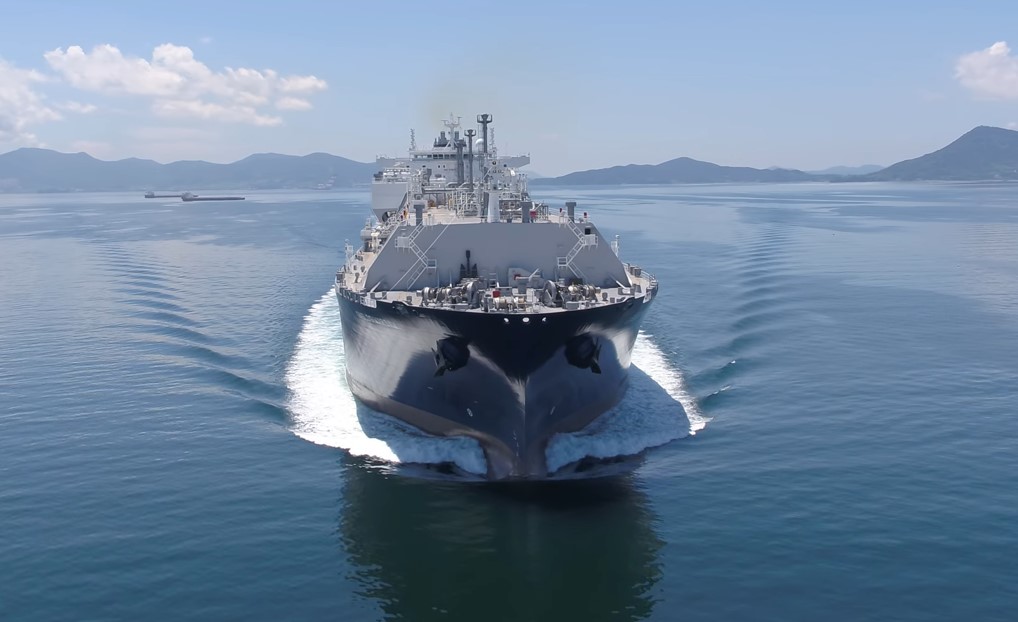This story requires a subscription
This includes a single user license.
Hanwha Power Systems, a marine solutions company of Hanwha Group, and GasLog signed a memorandum of understanding at the Gastech conference in Houston on September 19.
“Through this agreement, the two companies will discuss in more detail the demonstration plan to replace the existing fossil fuel-powered vessels with eco-friendly ammonia gas turbines,” Hanwha Power Systems said in a statement.
In August, Hanwha Power Systems and Hanwha Ocean with the support of GasLog completed preliminary engineering and economic feasibility reviews for LNG carrier retrofitting.
Following the signing of this MOU, Hanwha Power Systems and GasLog, will continue their collaboration focusing on performance, economic, and compliance assessments from a comprehensive perspective to promote the application of ammonia gas turbines in vessel retrofits, the statement said.
Meanwhile, in recent years, the shipping and shipbuilding industry has faced serious challenges in the face of carbon emission reduction regulations led by international organizations such as the International Maritime Organization (IMO) and the European Union (EU).
In anticipation of this new reality, Hanwha Power Systems, through its affiliate, Power Systems (PSM), located in the United States, has been actively developing an ammonia (NH3) combustion system to meet the anticipated requirements of the IMO and EU “Fit for 55”.
These development activities include a successful full-scale, high-pressure test campaign.
The PSM ammonia combustion system is planned to be implemented with a gas turbine intended for this power propulsion application, Hanwha Power Systems said.
Talks with other owners
Hanwha Power Systems’ move is attracting a “lot of attention” from shipowners who currently lack suitable alternatives for carbon reduction, the firm said.
According to the firm, ongoing discussions are also taking place with some major shipowners.
In particular, shipowners point out that ammonia gas turbines do not require pilot oil during normal operation, whereas engines typically use pilot oil at all operating points.
“For a gas turbine using ammonia fuel it is possible to operate completely carbon-free, or operators can freely mix ammonia and natural gas so that they can respond flexibly and economically to future regulations,” the company said.
The gas turbine will generate a “negligible amount” of methane slip, even if natural gas is used as fuel.
Hanwha Power Systems added feasibility studies are ongoing for other potential fuels that could be used.
GasLog fleet
The fleet of both GasLog and GasLog Partners consists of 38 LNG carriers with four vessels under construction, according to GasLog’s website.
Hanwha Ocean is building the four LNG carriers
Peter Livanos-led GasLog ordered these vessels and two other 174,000-cbm LNG carriers at Hanwha Ocean in December 2021.
In July this year, GasLog named the 174,000-cbm GasLog Italy.
All of the LNG carriers have ME-GI propulsion. ME-GI is short for M-type, electronically controlled, gas-injection propulsion.
In addition, the vessels also feature a carbon capture and storage system.
Moreover, China Development Bank Financial Leasing (CDB Leasing) recently signed a sale and leaseback deal for another GasLog liquefied natural gas (LNG) carrier.
The vessel in question is the 2013-built 155,000-cbm, GasLog Santiago.
Last year, CDB Leasing has entered into deals to purchase two LNG carriers from GasLog and GasLog Partners for $248 million.
These vessels are the 2013-built 155,000-cbm, GasLog Sydney, and the 2014-built, GasLog Saratoga.
In March 2022, GasLog and a unit of CDB Leasing also completed the sale and lease-back of the 2013-built 155,000-cbm, GasLog Skagen.

